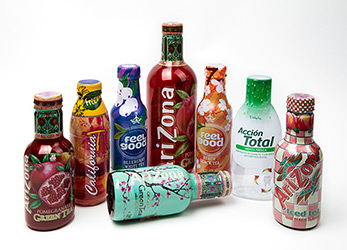Polyethylene terephthalate, known as PETG or PET-G, is a thermoplastic polyester with significant chemical resistance, durability, and moldability for manufacturing. PETG resin is an adapted version of PET (polyethylene terephthalate), where the "G" stands for glycol, which is added at the molecular level to provide different chemical properties. PET uses the same monomers as glycol-modified PETG, but PETG film has higher strength and durability, and is more impact resistant and better suited to higher temperatures.
PETG resin is also well suited for techniques such as bending, die-cutting and routing.
Content:
How is it made?
Is it environmentally friendly?
What are the uses of this?
What are its properties?
We have extensive experience in supplying plastic packaging film and shrink film to our industrial members - please contact us for more information.
In order to understand how polyethylene terephthalate is made, it's important to first understand how PET was discovered and created.
Advances in polymer chemistry in the mid-20th century saw scientists discover new materials that could be used to replace traditional organic products. Phthalic acid polymers were used in paints and varnishes, while synthetic fibers based on ethylene glycol were used in textiles. However, phthalic acid products were too soft to be used as fibers, and the melting point of glycol-based materials was too low to be used in textiles.
The creation of polyethylene terephthalate modification or PETG shrink film, replaces the glycol in the molecular chain with a larger monomer, cyclohexanedimethanol, thus stopping the crystallization associated with PET. Due to the increased heat resistance, PETG molecules do not tend to clump together as much as PET, which lowers the melting point and inhibits crystallization.
This means that polyethylene terephthalate can be used in thermoforming, 3D printing and other higher temperature applications without losing its properties.
PETG film can take decades to fully decompose when sent to landfills, but it is easily recycled using chemicals that break the polymer chains back down to their original components. These components can then be used as raw materials to make new polymers.
Producing fresh plastic consumes a lot of energy and water, so recycling plastic for reproduction greatly reduces the consumption of natural resources. Recycling also prevents PETG products from breaking down into tiny pieces that pollute the oceans and the world's water supply and threaten aquatic life.
Thus, while polyethylene terephthalate, like all plastics, can be harmful to the environment, its recyclability can greatly reduce or eliminate this negative impact.

PETG has applications in a range of industries due to its resistance to heat, impact and solvents. It is widely used in packaging (retail and medical), advertising displays and electronic insulators.
It is also widely used in 3D printing because glycol prevents problems associated with PET, such as overheating and becoming cloudy and fragile. It can also sterilize PETG objects. PETG is becoming the material of choice for 3D printing because of its good interlayer adhesion, low distortion during printing, good resistance to low temperatures, chemical resistance to alkalis and acids, and lack of odor when printing.
Polyethylene terephthalate is ideal for producing flexible parts with good shock resistance, such as pressure-wrapped items, protective parts or food containers.
As a copolymer, PETG film combines the properties of PET and ethylene glycol. This combination means that the overheating problems associated with PET are reduced.
Key properties of polyethylene terephthalate include hardness, chemical and impact resistance, clarity and ductility.PETG is an easy-to-extrude material with good thermal stability and is particularly suitable for food applications. Polyethylene terephthalate is particularly suitable for 3D printing, with extrusion temperatures between 220° and 260°C and printing speeds of 40-60 mm/s.
However, for all its positive properties, PETG resin requires the use of a heating plate to avoid warpage found with ABS 3D printing and is more prone to scratching than PLA. It is recommended that the temperature of the heating plate not exceed 80°C. The sticky appearance of PETG also means that print supports can be difficult to remove.
PETG absorbs moisture quickly and will hold up better in a cool, dry environment.
Please follow HYF to get more information. We have high quality PETG shrink films for sale.
Copyright © HUBEI HYF PACKAGING CO., LTD. All Rights Reserved | Sitemap
| Powered by

SEOKeywords:Shrink Wrap Film Customized Biodegradable Shrink Film Pvc Shrink Film Rolls Flexible Packaging Film Petg Shrink Film Properties Custom Printed Shrink Film High Shrink Petg Shrink Film China Pvc Shrink Wrap Film Shrink Sleeve Plastic Label Films Shrink Sleeve Packaging Pvc Shrink Film Manufacturing Process Pvc Super Clear Shrink Film Heat Shrink Film Roll Pvc Shrink Film For Bottle Label Price Shrink Wrap Uses China Shrink Film Pvc Clear Shrink Film Printable Shrink Film Plastic Shrink Film